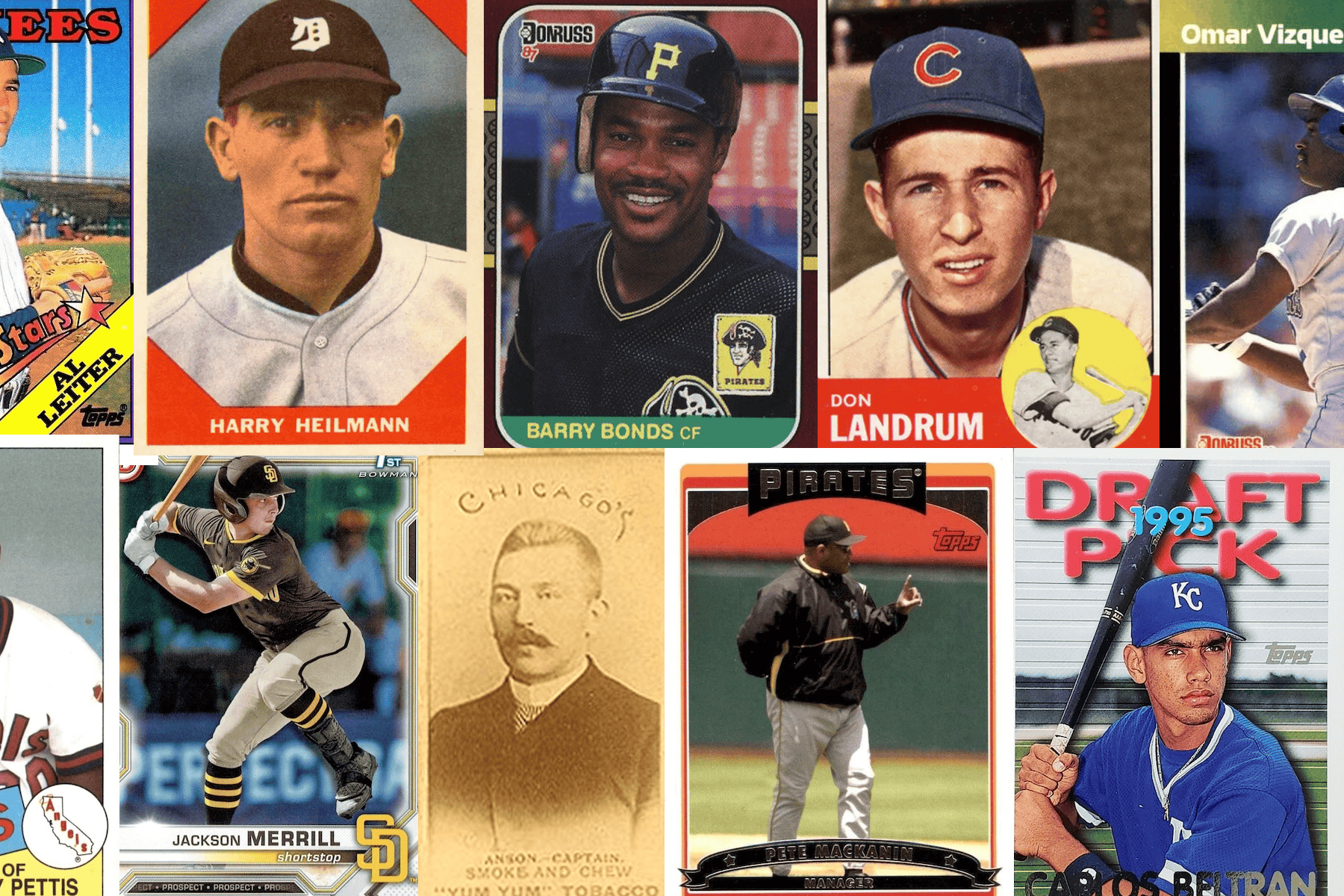Baseball players mean the world to us. We see them at the stadium, on our devices and in print. How can anyone not recognize them? And yet, there have been myriad instances where the wrong player was featured on a baseball card. This leads to confusion, embarrassment, and sometimes amusement. While baseball card photo errors are less frequent today, they were more common in earlier eras of baseball card production.
In this article, we’ll examine several well-known cases, the reasons behind these mistakes, player reactions when applicable, and how modern technology and practices have significantly reduced these baseball card photo errors.
How Does the Wrong Player End Up on a Card?
Misidentification by Photographers or Designers
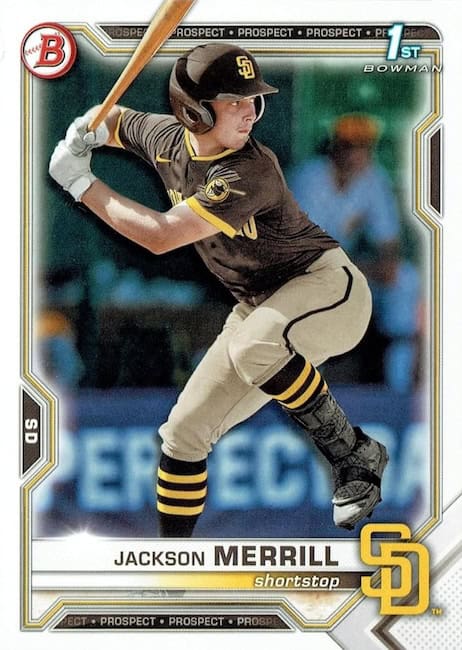
One of the primary reasons a wrong player might appear on a card is a simple case of misidentification. In the early days of baseball card production, photography sessions were often rushed, and the photographers were not always familiar with the players. This could lead to the wrong player’s image being submitted or used in the design. Team rosters could also change between the time photos were taken and when cards were printed, leading to mix-ups.
For example, in October 2020, photographer Mike Janes was working at a large amateur baseball tournament. He heard Jackson Merrill’s name announced. Knowing he was a highly-rated prospect, Janes ran over and snapped a picture, which he sold to Topps. Only later did everyone find out that the wrong player had been announced at the field, and the photo was actually Isaac Frye. Unfortunately, the error wasn’t caught until Merrill’s 2021 Bowman prospect card was printed.
(If you’re wondering how they got Isaac Frye in a Padres uniform, they didn’t. For prospects who haven’t yet been drafted, airbrushing the uniform of their eventual team is common. Neither Frye nor Merrill had suited up for any major league team on that day in 2020.)
Outdated or Mislabeled Files
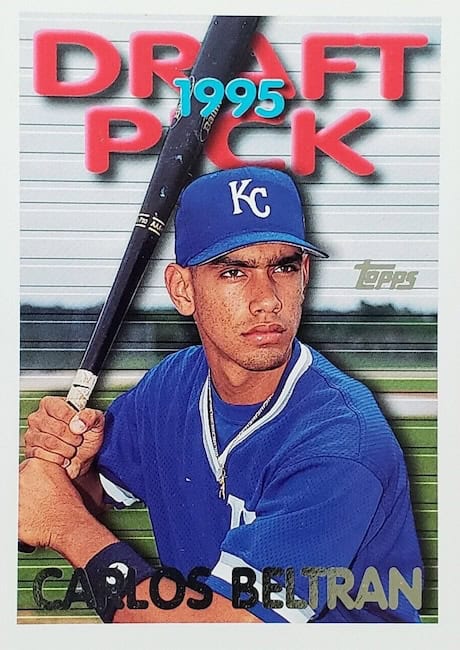
In the age of digital storage, having a database of player photos seems like a logical solution, but it wasn’t always so streamlined. Prior to the digital revolution, baseball card manufacturers kept physical files of player photos, which could easily be mislabeled, misplaced, or mixed up. In some cases, old photos of players who were traded or retired might have been used mistakenly for newer players with similar names or appearances.
During MLB photo days now, players now pose with a sheet of paper containing their name and uniform number, so the photos can be identified. This cuts down on baseball card photo errors, although players still try to get away with pranks on occasion.
Production Errors
Sometimes, everything is done right but the manufacturing process fails and creates an error card. In 1987, Donruss accidentally used a photo of Johnny Ray on Barry Bonds’s rookie card. What made it especially embarrassing was that the same photo of Ray appeared in the set, on with the correct name. Donruss eventually fixed the error, and it’s estimated that only 1% of the print run contained the error card. Because of its rarity, and because Bonds went on to become a superstar, the card can sell for several thousand dollars in top condition.
Reactions to Photo Swaps
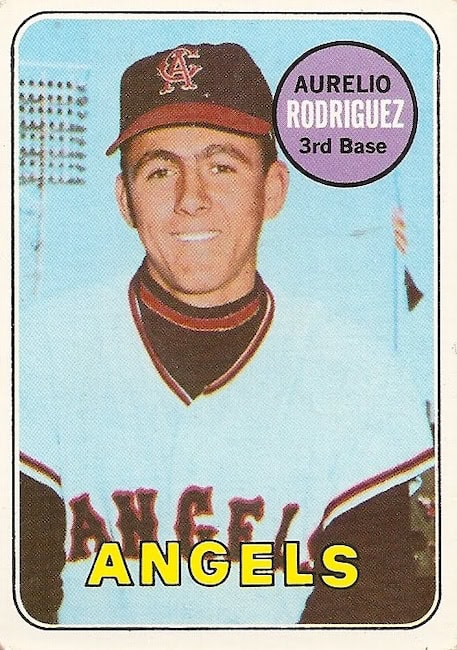
Mistakes on baseball cards can evoke various reactions from the players involved. Some find it amusing, while others might be annoyed or embarrassed. There are a few well-documented stories of players responding to such mistakes.
Sometimes, a series of events creates a situation where an error is made. In 1969, Aurelio Rodriguez’s baseball card featured the Angels bat boy, Leonard Garcia, instead of its third basemen. According to Garcia, he was playing catch with Rodriguez when a freelance photographer asked to take photos. Since there were disputes between Topps and the MLBPA at the time, the photographer had no official connection to Topps, or to the resources he might have used to avert the error. Instead, he wrote down the Garcia’s and Rodriguez’s names in the wrong order, and an error card was born.
In modern times, as baseball card photo errors have become less frequent, players might not even be aware of them unless collectors or fans bring it up. Social media has also changed how these mistakes are addressed, with players sometimes reacting publicly when their likeness is confused with another.
Famous Baseball Cards with the Wrong Photo
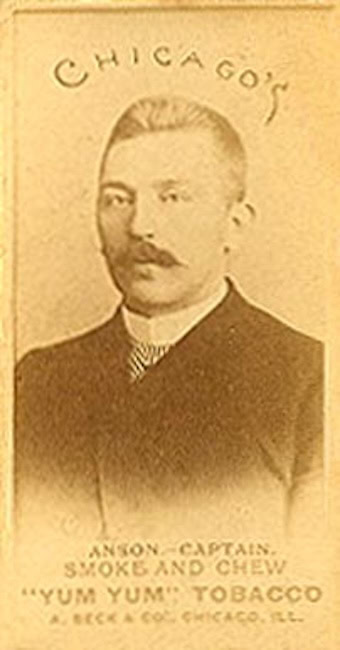
Vintage Examples
1888 Yum Yum Tobacco N403 Cap Anson – Errors started early in the history of baseball and never stopped. This card features a photo of Anson’s teammate, Ned Williamson. It might be the most famous 19th century photo swap.
1909-10 C.A. Briggs (E97) Cy Young – Irv Young was a pitcher in the same era as the legendary Cy Young. Though they were unrelated, Irv Young was often referred to as “Young Cy” or “Cy the Second,” even though he wasn’t nearly as good. This card depicts Irv Young, with a caption for Cy Young. It has also started a spirited debate about whose card it really is – Do you pay Cy Young prices, or Irv Young prices?
1960 Fleer Harry Heilmann #65 – Nobody noticed this error for almost a century. Larry Woodall is actually depicted on this card of Heilmann, stemming from a misattributed Associated Press photo in 1923. The error has since occurred on more modern cards, but appears to have made its cardboard debut with the 1960 Fleer set.
1969 Aurelio Rodriguez #653 – Featuring, instead, the most famous bat boy in the 1960s.
Modern Examples
1985 Topps Gary Pettis #497 – This story will sound familiar. Pettis’s 16 year old brother was playing catch with the team when a photographer asked to take his picture. Months later, Gary Pettis ages backwards on his 1985 Topps card.
1987 Donruss Barry Bonds #163 – Fans love this one because of the combination of rarity and because the card is for Barry Bonds, who went on to famous (and infamous) things in baseball.
2021 Bowman Draft Jackson Merrill #BD-119 – Jackson Merrill is one of the most promising young players in the game. It’s too bad that his first Bowman card is an uncorrected error featuring the aforementioned Isaac Frye.
Modern Technology’s Impact on Reducing Baseball Card Photo Errors
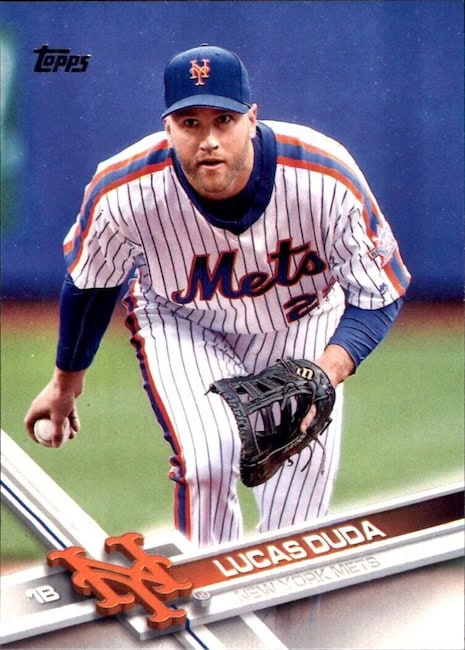
As technology has evolved, the frequency of such errors has dramatically decreased. Advances in digital photography, better communication between teams and card manufacturers, and sophisticated design tools have made it easier to ensure that the right player is featured on each card.
Digital Photography and Database Management
Today, professional baseball card manufacturers like Topps and Panini rely on digital photography to capture high-resolution images of players. These images are instantly stored in large, organized databases, where each photo is tagged with metadata, including the player’s name, team, and position. This tagging helps designers quickly verify that the correct image is being used.
In contrast to the old days of mislabeled physical photos, today’s digital archives are much easier to search, preventing outdated or incorrect images from slipping through. Furthermore, designers now use sophisticated software to cross-reference player data, ensuring that the correct image matches the intended player. This minimizes the chance of the wrong player being featured on a card due to outdated or incorrect files.
Improved Communication Between Teams and Card Manufacturers
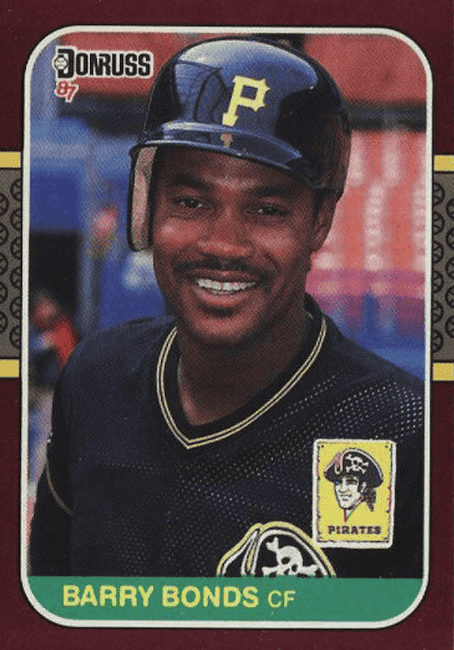
Another critical advancement is the improved communication between baseball teams and card manufacturers. In the past, miscommunication or lack of direct contact between the two parties sometimes resulted in outdated rosters or incorrect information being used during card production. Now, there are streamlined processes in place to ensure that current rosters, player trades, and number changes are up-to-date.
For example, many card manufacturers have representatives working closely with MLB and the MLBPA to gather accurate information about players. Additionally, these manufacturers have direct access to team PR departments, helping to avoid errors like featuring a player who was recently traded or cut.
Social media platforms such as Twitter and Instagram have also become crucial in error detection and prevention. If an error does occur, it often doesn’t take long for fans and collectors to point it out. Card manufacturers can quickly respond, offering corrections or issuing apology statements if necessary.
Conclusion
While the frequency of baseball card photo errors where the wrong player appears on a baseball card has decreased, these mistakes are still part of the rich history of baseball card collecting. From early errors due to misidentification and outdated files to modern social media-driven reactions, these incidents continue to captivate collectors. Modern technology, such as digital photography and database management, has significantly reduced the likelihood of these errors, but they remain an interesting part of the hobby’s past. For collectors, these error cards can hold a special appeal, representing a unique blend of humor, history, and human error.
